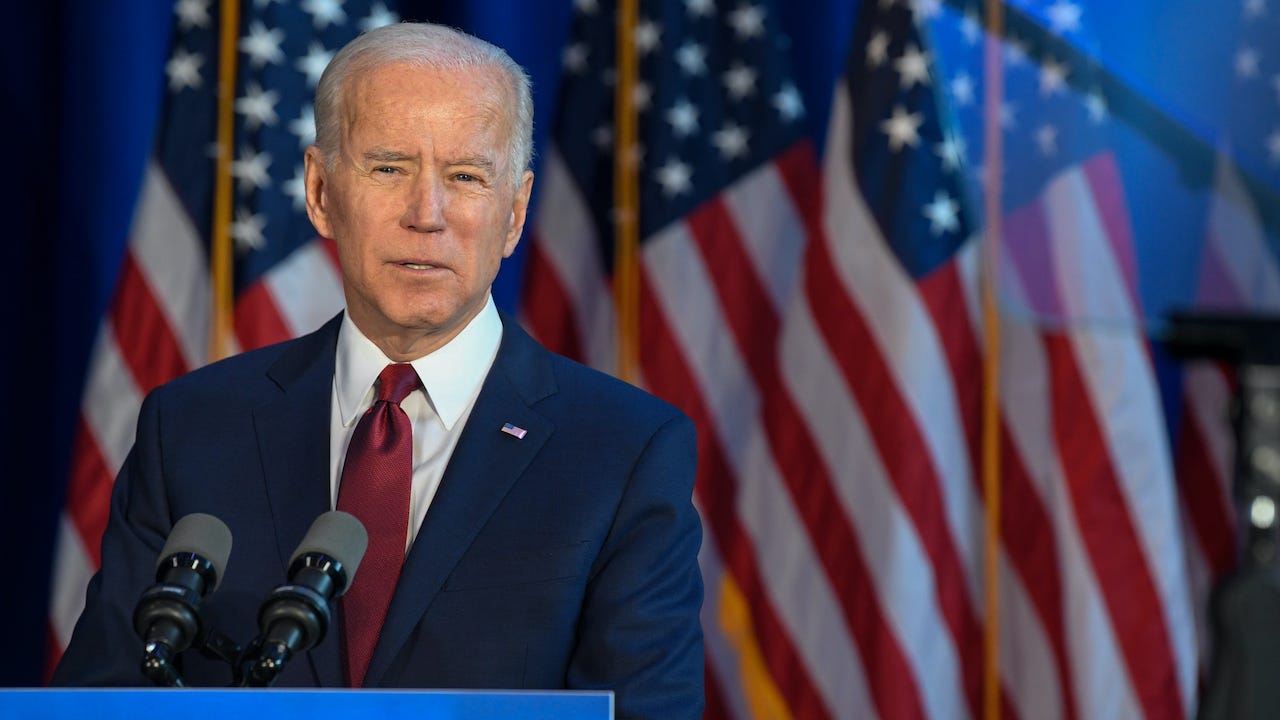Will Biden forgive private student loans?

Student loan forgiveness has dominated much of the conversation around college debt in the past few years, sparked by President Biden’s campaign promise and subsequent announcement that he would cancel up to $20,000 of student loan debt for most federal borrowers.
However, this one-time student loan cancellation will only benefit borrowers with federal debt. Borrowers with private student loans — loans given by banks, credit unions and online lenders — are still on the hook for their payments.
Will student loan forgiveness include private loans?
Unfortunately, the odds of student loan forgiveness extending to private loans are slim. For one, all current loan forgiveness programs, such as Public Service Loan Forgiveness, income-driven repayment plans and Teacher Loan Forgiveness, are limited to federal student loans. Even the military student loan repayment assistance program is limited to federal loans.
Student loan expert Mark Kantrowitz points out that while there was a past legislative proposal that included private student loans alongside federal loans (The Heroes Act of 2020, HR 6800, which passed the House but got blocked by the Senate)‚ it was far more complicated and couldn’t be implemented automatically.
Biden’s three-part student debt relief plan also focuses entirely on tackling federal student debt. Because private student loans are managed by private companies, they are exempt from the debt relief plans and proposals currently in place.
3 strategies for paying off private student loans
Although it’s highly unlikely that private student loans will be included in any government forgiveness plan, there are still some options you can explore to pay off your loans faster or make your monthly bill more manageable.
Strategy 1: Pause payments on federal loans, accelerate them on private loans
If you’re struggling to make your student loan payments, you can catch a break on your federal student loans. Biden has extended the payment and interest pause on federal student loans one last time through Dec. 31, 2022, so you can stop paying your federal student loans with no penalty and no interest until January 2023.
If you have both federal and private loans, it might make sense to stop paying federal loans and speed up payment of your private loans, Kantrowitz says. Because private loans typically carry higher interest rates than federal loans, this strategy will reduce your interest burden over time. What’s more, private loans generally carry less-generous terms around forgiveness, so you should prioritize paying down the money you owe to private lenders.
Strategy 2: Refinance your private student loans
Refinancing lets you pay off your old debt and roll the balance into a new loan, ideally one with a lower interest rate. However, you’ll need pristine credit to qualify for a rock-bottom rate. Rates on private loans can range as high as 14 percent.
At this time, focus on refinancing your private loans, not your federal loans. If you refinance federal loans, you’ll immediately be responsible for payments again, and you’ll lose the opportunity to apply for existing student loan forgiveness plans.
Strategy 3: Request forbearance
If all else fails and you can’t make your payments, try calling your private lender and asking for forbearance, which is a pause on payments.
“If for whatever reason you don’t qualify with a refinance provider and you want to pause your payments with your existing lender, you should give them a call and request a forbearance plan,” says Steve Muszynski, founder and chief executive officer of Splash Financial, a student loan refinancing marketplace. “While it’s likely that interest will still accrue, you’ll be able to take a break from your payments.”
Your options in this regard depend largely on the lender, as each have their own hardship plans and options in place. It doesn’t hurt to reach out and see if your lender is open to forbearance.
Private student loan forgiveness options
Private student loan forgiveness programs are few and far between. Getting your private loan forgiven is rare, but there are a few options for you to get assistance and to save on your private student loans:
- Employer-paid student loan repayment assistance program. You can ask your workplace if it offers an employer-paid student loan repayment assistance program, or LRAP. “These LRAPs let employers provide up to $5,250 per year in student loan repayment assistance to the borrower,” says Kantrowitz.
- State repayment assistance program. Some states offer student loan repayment assistance to residents of certain counties or workers in certain professions. These programs could wipe out tens of thousands of dollars in private student loan debt, as long as you’re willing to relocate.
- Leftover 529 college savings plan. Under the SECURE Act of 2019, leftover money in a 529 college savings plan can repay up to $10,000 in qualified education loans per borrower. This can go toward a beneficiary or a sibling of a beneficiary.
- Student loan interest tax deduction. The student loan interest deduction allows you to deduct up to $2,500 in interest paid on federal and private student loans. This could help you get a little money back on your tax return, which you can then put toward your private student loans.
You may also like

Your student loan forgiveness questions, answered





